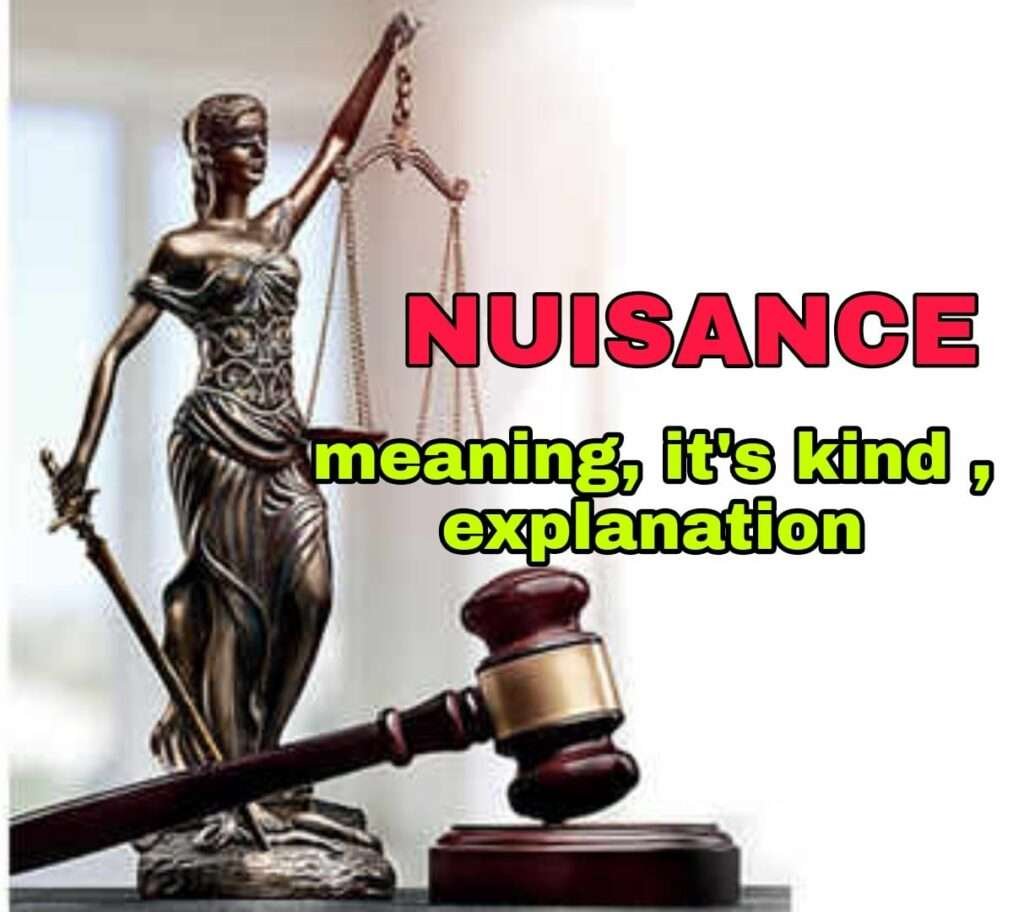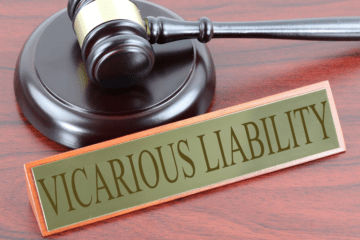
The word nuisance is derived from the French word “nuire” which means to do hurt or to annoy and Latin term “nocere” which means “to hurt or annoy”.
Nuisance can be defined as an illegal act or indirect illegal interference to the enjoyment of human property or causing any kind of discomfort.
According to Fredric Pollock, nuisance is a wrong done to a person by unlawfully disturbing him in the enjoyment of his land, or in some cases in the exercise of common right.
According to Dr. Winfield, nuisance as a tort means an unlawful interference with a person’s use or enjoyment of land, or some right over, or in connection with it. The interference may be by way of noise, vibrations, heat, smoke, smell, etc. Basically, we can say that any kind of unlawful interference with health, safety, or comfort may amount to nuisance.
Tort of nuisance is generally a continuing wrong which is related to unlawful interference with a person’s use or enjoyment of land or of some right over, or in connection with it. Nuisance is crime as well as a tort. The person who has suffered any damage or any kind of discomfort because of unlawful act of another then he is entitled to claim damages. Every person has right to possession and undisturbed enjoyment of his own property. This can be explained by a Latin maxim “sic utere tuo ut alienum non laedas” which means “so use your own property as not to injure another’s”. In Bonomi vs Backhouse[i], the court has observed that this maxim is mere verbitage, because where law permits a party may damage the property of another but he may not where law prohibits, so the maxim can never be applied until the law is ascertained, and therefore, it is superfluous.
The HC of Punjab summarized the law relating to nuisance in its decision in Ramlal vs. Mustafabad Oil & Cotton Ginning Factory[ii] and laid down the following general principles:-
- Nuisance is a subjective and a relative term in the sense that what may be an inconvenience or annoyance to one person may not be necessarily so for another. Again, what may amount to nuisance in one place may not be so in other place under different circumstances.
- The degree of inconvenience an annoyance also varies from person to person and it depends on their individual sensitiveness.
- The annoyance or interference must be real and substantial because law takes no notice od trivial or fanciful inconveniences.
- If it is continued unabated then it is actionable as a continuing wrong.
- In certain situation even a natural tendency to cause damage or injury and a substantial fear or reasonable apprehension of danger may amount to nuisance.
- Vibrations caused to a plaintiff’s premises and noise exceeding a certain decibel limit and physical discomfort caused to persons of ordinary sensibilities are actionable as nuisance.
The HC of Gujarat in Ushaben Navinchandra Trivedi vs Bhagyalaxmi Chitra Mandir[iii], held that the main characteristics of an actionable nuisance are that it should be a wrongful act which causes injury or damage or annoyance or discomfort to others and such annoyance, discomfort or inconvenience should be sustainable and not trivial.
Nuisance can be divided in two parts:

- Public Nuisance:
Public nuisance is one which affects the reasonable comfort and convenience of life of a sizable class of public which come within the sphere of its operation. Public nuisance can be defined as an interference with the rights of public in general and it is punishable as a crime. In Attorney General vs P.Y.A Quarries Ltd.[iv], the court observed that public nuisance is one which is so widespread in its range or so indiscriminate in its effect that it would not be reasonable to expect one person as distinct from the community at large to take proceedings to put a stop to it.
Section 133 of CrPC, 1973 empowers the District Magistrate to pass order for the removal of public nuisance.
Ram Avtar vs State of U. P[v], in this case the appellants were carrying a trade of auctioning vegetables in a private house and the persons who brought vegetables for sale kept their carts on the public road which caused obstruction to the traffic. The noise caused due to the auctioning of vegetables was causing nuisance to the people in the locality. Thus, an order was passed to restrain such trade. The court held that the conduct of trade in vegetables was not injurious to public health nor was it a cause of physical discomfort to the community. Therefore, the order restraining such trade was not at all maintainable.
In Soltou vs De Held[vi], the plaintiff filed complaint of nuisance caused by continuous ringing of nearby church bell. The court held it to be a case of private nuisance therefore the plaintiff was entitled to an injunction.
MC Mehta vs Kamal Nath[vii], the defendant was discharging untreated effluents which was polluting the river. It has caused serious damage to the river bed, flora-fauna and fishery in the area. The SC observed that environmental pollution is a civil wrong against the community as a whole giving rise to cause of public nuisance. The court directed the respondent to stop further construction on motel and pay Rs. 10 lakhs to restore the ecology of the region.
Private Nuisance:
Private nuisance may be described as unlawful interference with a person’s use or enjoyment of land, or some right over, or in connection with it. It may be in three forms namely,
- Unlawful interference or enforcement on a neighbour’s land
- Interference with the enjoyment of land
- Direct material damage
If the nuisance causes injury or damage to an individual or group of individual then it is called private nuisance. It gives the affected person a claim of ‘Right in Personam’.
Essentials of Private Nuisance:
- Unlawful and Unreasonable Interference
The plaintiff must establish that there is a substantial interference with his right to use and enjoyment of land or property. Thus, if the interference is not unreasonable no action can lie for nuisance.
- Interference with the enjoyment of land
It may be in two forms, namely (1) by causing damage to property itself, or (2) injury to comfort or health of the occupants of certain property.
Dr. Ramraj Singh vs Babulal, in this particular case the plaintiff has suffered some damage due to the smoke coming from the brick factory which is nearby situated. So, he filed a suit against owner of the factory and it was held that he is entitled to get compensation.
Datta Mal Chiranjilal vs Lodh Prasad, in this case the defendant established a floor mill adjacent to plaintiff’s house due to which the plaintiff suffered physical discomfort because of vibration and noise so he filed a suit and he was compensated for the same.
In Kinkri Devi vs State of Himachal Pradesh[viii], indiscriminate blasting and mining operation for extracting lime stone in Shivalik Hills in Sirmaur District of Himachal Pradesh had created a serious health and environmental hazard which was a nuisance for the inhabitants of that vulnerable area. The court ordered for the closure of mining in that area and directed the government to regulate the mining activities in the area to prevent the nuisance.
- Damage
Private nuisance is not actionable per se thus, the plaintiff need to prove the damage caused to him due to the defendant’s wrongful act of nuisance. However, where nuisance involves the violation of a right to easement, the damage need not to be proved because the prayer is usually for an order of injunction. In Ryland vs Fletcher[ix], the court laid down the principle of strict liability and said that where the principle of strict liability is applicable, the plaintiff need not prove any damage and the defendant will be held liable.
[i] (1858) E B & E 643
[ii] AIR 1968 Punj 399 (402)
[iii] AIR 1978 Guj. 13
[iv] (1957) 2 QB 169 (184)
[v] AIR 1962 SC 1794
[vi] (1851) 2 Sim NS 133
[vii] AIR 2000 SC 1997
[viii] AIR 1988 HP 4
[ix] (1898) LR 3 HL 330
X Dr. N.V. Paranjape, Law of Torts (4th ed. 2019)




0 Comments